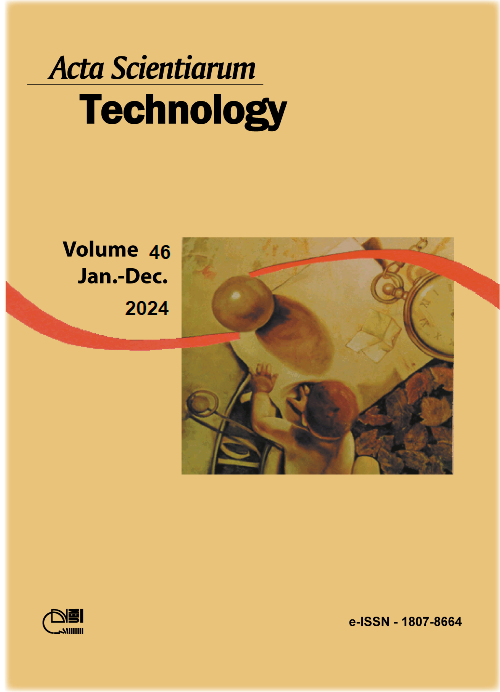Comparison of different freezing techniques, extenders, and cryoprotectants on quality and fertility of cryopreserved Salmo trutta f. fario sperm
DOI:
https://doi.org/10.4025/actascitechnol.v46i1.64924Palavras-chave:
brown trout, cryopreservation, extender, straw, pellet.Resumo
There is still a lack of standardized methodology in the cryopreservation of Salmo trutta f. fario sperm. Thus, the present study was designed to compare current freezing protocols to improve and as well as to examine the post-thaw quality and fertilizing ability of cryopreserved sperm in Salmo trutta f. fario. Sperm samples were diluted at a 1:10 ratio in one of three extenders (Alsever´s solution, glucose-based, and ionic-based) containing four types of cryoprotectant (DMSO, DMA, MeOH, glycerol) at 10% concentration and frozen in 0.1 mL pellets on surface of the dry ice (solid carbon dioxide, 79°C) or in 0.25 mL straws 2 cm above of the liquid nitrogen (LN2) surface at a rate of ~30°C for 10 min.1 before storage in a mL cryotank (-196°C). The frozen sperm cells in straws and pellets were thawed in a water bath at 25°C for 30 s and at 20°C for 6 s respectively. Fertilization was carried out using a ratio of 5x105 sperm/egg in both freezing methods. The glucose-based solution including glycerol produced the highest post-thaw progressive motility (62.5 ± 1.24%), motility duration (57.2 ± 0.46 s), and viability (56.4 ± 1.57%) (p < 005) in the straw method. In breeding trials, similarly, sperm frozen-thawed with the glucose-based solution including glycerol produced the highest fertilization (54.2 ± 0.36%) and hatching (30.6 ± 0.28%) in the straw method. Fresh sperm used as control produced 82.6 ± 0.45% and 78.4 ± 1.27% fertilization and hatching respectively. It was concluded that sperm frozen in straws produced higher post-thaw sperm motility and fertility of eggs than those frozen in pellets. Also, the results suggest using of glycerol-supplemented glucose solution because of producing better results in both freezing techniques.
Downloads
Downloads
Publicado
Como Citar
Edição
Seção
Licença
DECLARAÇíO DE ORIGINALIDADE E DIREITOS AUTORAIS
Declaro que o presente artigo é original, não tendo sido submetido í publicação em qualquer outro periódico nacional ou internacional, quer seja em parte ou em sua totalidade.
Os direitos autorais pertencem exclusivamente aos autores. Os direitos de licenciamento utilizados pelo periódico é a licença Creative Commons Attribution 4.0 (CC BY 4.0): são permitidos o compartilhamento (cópia e distribuição do material em qualqer meio ou formato) e adaptação (remix, transformação e criação de material a partir do conteúdo assim licenciado para quaisquer fins, inclusive comerciais.
Recomenda-se a leitura desse link para maiores informações sobre o tema: fornecimento de créditos e referências de forma correta, entre outros detalhes cruciais para uso adequado do material licenciado.















